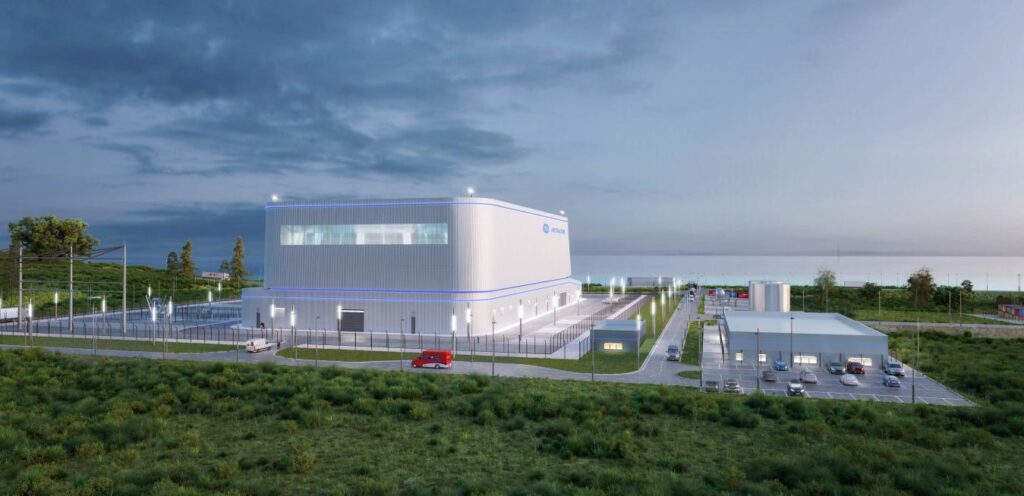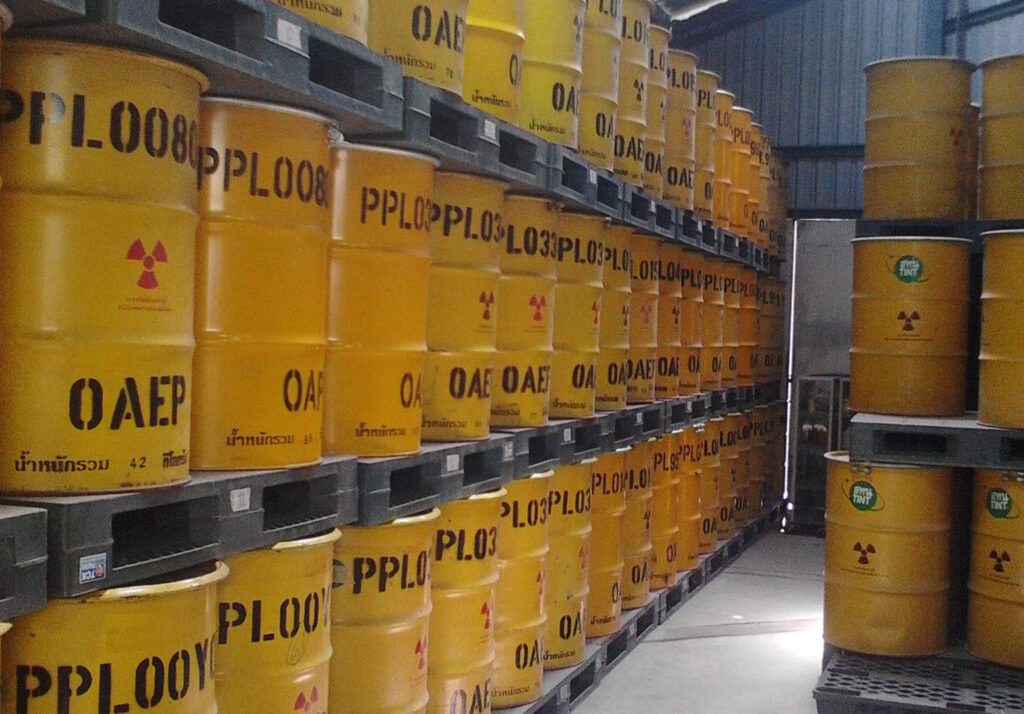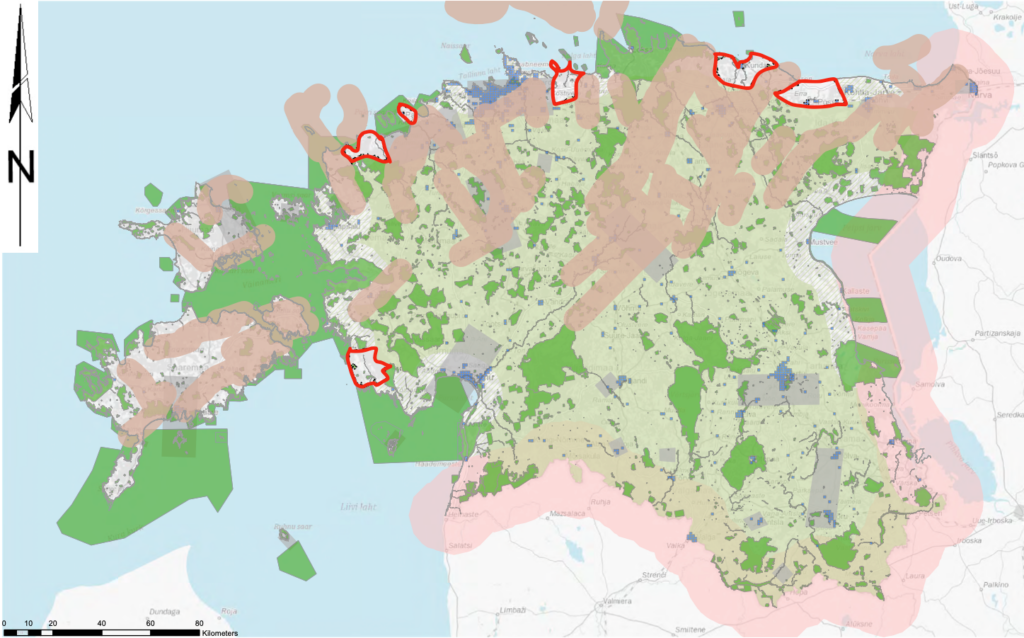An analysis carried out under the leadership of the Estonian climate ministry suggests that the annual amount of fuel used per reactor at the potential nuclear power plant in Estonia would be 12 metric tons, and if the nuclear plant is built for 60 years, a total of 720 metric tons of spent nuclear fuel per reactor would be generated during this period.
In terms of volume, this is comparable to about three sea containers, spokespeople for the ministry said.
The decision to build a nuclear power plant has not yet been made; the Estonian parliament will make this decision. In order to make a knowledge-based decision, the nuclear energy working group established on the initiative of the climate ministry has commissioned several analyses.
In the latest analysis, experts assessed the quantities of radioactive waste to be generated by the plant and the options for its management and disposal. As there are no small reactors suitable for Estonia in commission yet, the waste quantities shown in the study are estimates based on the GE Hitachi BWRX-300 small modular reactor, which is considered to be basically suitable for Estonia, and on the experience of nuclear power plants to date.

Peter Breitenstein, an expert on radioactive waste and the author of the analysis, recommends that Estonia should keep its spent fuel management options open.
Long-term storage or reprocessing
“In today’s situation, reprocessing a relatively small amount of spent fuel could be one of the options of interest for Estonia, but may not be immediately doable,” the expert said. “Nevertheless, the option of fuel reprocessing should not be legally restricted, as it may prove feasible in the future,” he added.
The state has to make a choice between an open and a closed fuel cycle, that is, decide whether spent fuel is to be considered as waste that requires long-term storage and then placement in a repository, or to require its reprocessing.
If Estonia were to decide in favour of a closed cycle, France would be the only possible fuel recycler in Europe at the moment. However, in the case of reprocessing, the complex and expensive transportation of nuclear material must be taken into account, and a buyer must be found for the mixed oxide fuel made from spent fuel, if Estonia itself does not have the opportunity to use this type of fuel.
Besides, after reprocessing, a small amount of waste that cannot be recycled and for which a final storage option must still be found will be returned to the state.

As regards the open fuel cycle, the analysis proposes three options for the final storage of spent fuel: the construction of a deep geological repository site similar to Finland and Sweden, the construction of a final repository using the borehole method, where the waste is lowered to a depth of one to three kilometres (0.6-1.8 miles) in special capsules, or participation in the construction of a regional repository.
Using fuel made from the spent fuel
Antti Tooming, a deputy secretary general of the climate ministry and the head of the nuclear energy working group, said that, in its technical solutions, the future plant operator should also consider the possibility of using nuclear fuel made from the spent fuel.
“The use of such fuel does not require very large technical changes in the design of the reactor. Moreover, the possibilities for recycling spent fuel are constantly being developed around the world,” he said.
The analysis stresses the state must set out a legal framework for the establishment and management of a fund for the disposal of radioactive waste generated by the plant and for post-closure costs on the basis of the “polluter pays” principle. The assets of the fund will be used for the management and final disposal of waste at the end of the life of the nuclear power plant.
The topic of radioactive waste is one of the 19 aspects that a country considering the deployment of nuclear energy must analyse, according to the guidelines of the International Atomic Energy Agency.

The final report of the nuclear energy working group, on the basis of which it will be possible to decide whether the construction of a nuclear plant contributes to ensuring Estonia’s energy security and achieving climate goals, will be completed by the end of 2023.
A single private energy company pushing the nuclear agenda
Fermi Energia, an Estonian private energy company, was established in 2019 with an aim to deploy a small modular nuclear reactor in Estonia. The company has since actively lobbied both the country’s government and the general public in favour of the nuclear power plant.
Fermi considered three manufacturers for the nuclear plant – GE Hitachi (US), Rolls-Royce (UK) and NuScale (US). In February 2023, the company said it had selected GE Hitachi’s BWRX-300 as the most suitable reactor and announced that “the planning, design and construction of the Estonian nuclear power plant can be gradually started”, despite the fact that the country’s parliament has not yet given the green light for the project. GE Hitachi has said its first BWRX-300 “could be complete by late 2028”.

Estonia has never had a nuclear power station before, but the country is looking for alternative ways to generate energy.

